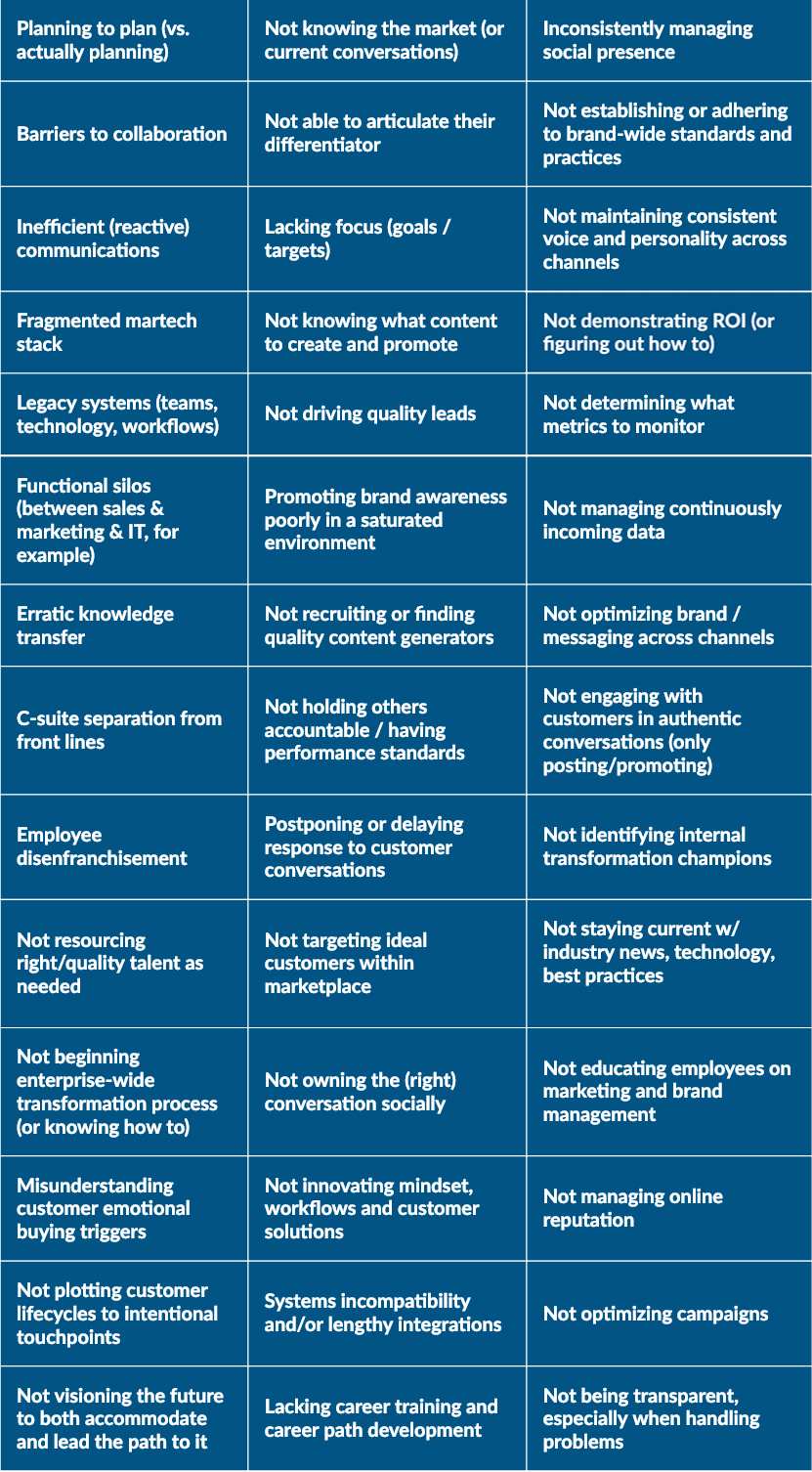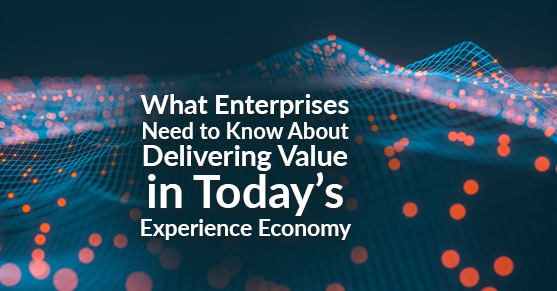Enterprises must understand what they need to know about delivering value in today’s Experience Economy. Consumers are savvy, informed, and empowered; they hold the keys that control the fate of enterprise.
What is the Experience Economy?
The Experience Economy is all about, well, the experience that people — customers, users, partners, stakeholders — have with your brand.
User and customer expectations are based on their last great brand experience (compete with Amazon, anyone?).
Up until now, there are two abbreviations that describe how business is done — B2B or B2C — but, the reality is that business today is H2H — human to human — regardless of the scale or audience.
Profit is merely a by-product of
delivering value throughout all
stages of the experience.
The way enterprise has always been done doesn’t work anymore. Every touch point is an experience and needs to be thoughtfully crafted.
The Industrial Revolution and Digital Enterprise
Business has operated for decades off two assertions: 1) that their customer was always external; and, 2) that their customers could fit in a box.
Why? Because enterprise has evolved through the industrial revolution to the Experience Economy.
It was revolutionary in 1913 for Henry Ford to develop an auto assembly that reduced the time spent building a car from more than 12 hours to just 2.5 hours. In doing so, he put in place a process template that business adopted as efficient for the next century.
The problem is that, outside manufacturing, most enterprise today has no conveyor belt with identical parts that predictably create the same result for every customer. That definition of efficiency is irrelevant for where we are in business today. Why? Because customer experience is not linear; in fact, customer experience needs to be personalized based on meeting the customer where they are vs. where the business thinks or wants them to be in their buying journey and relationship to the brand.
Even more, customer experience is not limited to external buying customers but includes internal customers as well — employees, leaders, and stakeholders.
The Power of Micro-Moments
Business today operates in many intangibles, where “in the moment” experiences — that are both within and outside the scope of influence for a given company — shape and determine success. Paralleling real life, business unfolds through the customers’ intangible perception of it as they experience it.
Everything that touches or comes from the brand becomes part of that brand’s experience — from social chat to an online review to an article to a casual conversation over coffee. Ironically, the brand may not even know their own story if an experience or perception has been stated, published, or promoted without their knowledge.
In other words, to restate the original point made, we are in the Experience Economy where customers control the brand’s success (or demise) from moment to moment.
The collective mindset of the enterprise has, traditionally, focused on Henry Ford’s assembly line, meaning that marketers have been trained to think in end-product results that are similar for every customer (as determined by the business vs. the customer). These results are produced by invisible consumers of the brand promise — the employees — and business infrastructure, workflows, and technology all operate with that same linear construct of “industrial” business.
So enterprise today typically works as a natural outcome of using history as the compass for how to conduct business. The people delivering goods are doing what they’ve been taught as best practices. The people who are buying goods are speaking up about what they want and voting with their dollars; loyalty is a moving target. Business leaders may see the issue but not know how to change it given the Internet of Things, where technology and information converge to give consumers more options than ever before.
The big takeaway is this: what got us “here” will not get us “there”.
The mandate for savvy enterprise today is to deliver predictable, relevant value through personalized relationships (both internal and external) and accommodate real-time shifts in market needs and wants at the speed of dynamic conversations.
The Symptoms of Compromised Enterprise
So how does an enterprise know if they are not ready for the Experience Economy? There are many symptoms that can indicate when it’s time for an enterprise to upgrade their ability to deliver value in this increasingly fast-paced business environment. None of them can be considered a singular factor; instead, any one of them usually indicates systemic issues.

If you recognize your organization in just one of the symptoms listed, then the time is now to consider new options in delivering greater value in the Experience Economy.
The future of your enterprise depends on it.
Most companies will try to do what everyone else is doing but faster, cheaper, smarter, longer than everyone else while expecting fresh, personalized outcomes. As Einstein said, this is the definition of insanity — to do the same thing over and over again but expecting different results.
XTIVIA helps you create different results.
To learn why customer experience is not the right goal, what’s stopping enterprises from changing, where we are now and what’s possible with reinvention, watch the video here. (And bonus — there is a real-time example of the Experience Economy in the video!)
Let’s talk about how your organization can deliver even more value in the Experience Economy.
Please schedule some phone time with us at your convenience:
+1 (888)685-3101 ext.2

